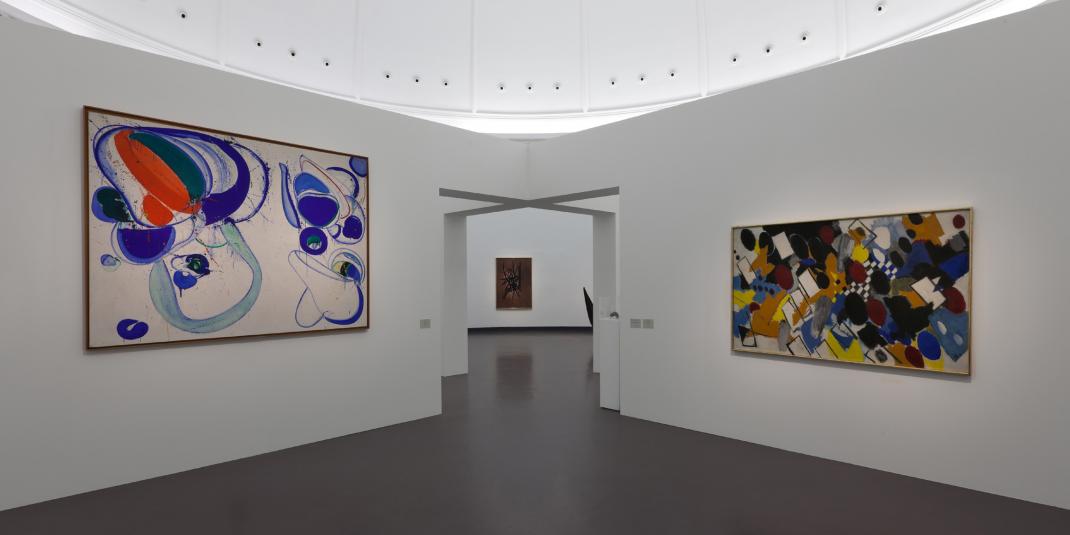
Art from the 1950s
The permanent collection of the Hamburger Kunsthalle includes a substantial number of fine paintings and sculptures from the 1950s, but these significant holdings are only rarely on public display due to space restrictions. Their inclusion in the collection is due to the strong commitment of Alfred Hentzen, the director of the Hamburger Kunsthalle from 1955 to 1969. Before taking up his appointment in Hamburg, Hentzen was the director of the prestigious Kestner-Gesellschaft in Hanover, where he presented recent developments in art immediately after the Second World War. Almost all of the artists from Germany – and many from France, Italy and the United States – who later became leading figures on the international art scene had their first major exhibitions at the Kestner-Gesellschaft. When he became the director of the Hamburger Kunsthalle, Hentzen was in a position to acquire works by these artists; it is interesting to note that although he usually only bought a single work by each artist, it was always an important one that could be considered representative of their oeuvre. Hentzen’s successor, Werner Hofmann, was able to acquire further significant works for the Hamburger Kunsthalle, with the result that our collection of artworks from this period now ranks as one of the finest in Germany.
In the German art world of the early 1950s, a bitter feud had broken out between figurative artists and those who had abandoned representational painting and begun to create abstract compositions. Hentzen’s acquisitions for the Hamburger Kunsthalle were a clear demonstration of support for the new painterly abstraction that was emerging in Germany and above all in France, from where it went on to make an international impact under the heading of ‘Ecole de Paris’. Paintings by Jean Bazaine, Alfred Manessier, Serge Poliakoff, Pierre Soulages and the German-born Hans Hartung illustrate the diverse forms of painterly expression being developed in France at this time, which inspired and influenced a generation of artists around the world. In France itself, these painters were confronted by artists who were more interested in exploring the themes of existentialism – a widely debated issue in the post-war period; these included Jean Dubuffet, the sculptor Germaine Richier, the Paris-based German artist Wols and his Swiss colleague Alberto Giacometti.
In the young Federal Republic of Germany, painters such as Willi Baumeister, Ernst Wilhelm Nay and Fritz Winter, along with the sculptor Hans Uhlmann, were breaking new ground in art. Nay’s “Akkord in Rot und Blau” (Accord in Red and Blue, 1958), for example, was prominently featured on the cover of the third edition of Werner Haftmann’s seminal book Malerei im 20. Jahrhundert. The work on display here by Reinhard Drenkhahn, who committed suicide in 1959, shortly before his art gained broad recognition, shows that painters from Hamburg were also forging bold new paths during the 1950s. In England, new artistic directions were being explored by Francis Bacon, Henry Moore and the young David Hockney. Thanks to Hentzen’s acquisitions of pieces by the American artists Sam Francis and Alexander Calder, the Hamburger Kunsthalle became the first German museum to have their work in its permanent collection.
In a fascinating juxtaposition of painting and sculpture, 23 major works from the museum’s considerably larger collection of art from the 1950s have been installed in the Kuppelsaal (domed hall). This is the final presentation curated by Dr. Ulrich Luckhardt, who has been a valued member of the Hamburger Kunsthalle staff for many years.







